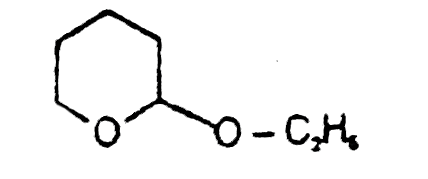In general, the order of hydrolysis among acid derivatives is
RCOCl>RCONH2>RCOOR'>(RCO)2O
RCOCl>(RCO)2O>RCOOR'>RCONH2
(RCO)2O>RCOCl>RCONH2>RCOOR'
RCOOR'>RCOCl>(RCO)2O>RCONH2
The correct Answer is:B
To determine the order of hydrolysis among acid derivatives, we need to analyze the stability of the intermediates formed during hydrolysis. The general order of hydrolysis can be derived from the reactivity of different acid derivatives.
1. Identify the Acid Derivatives: The common acid derivatives include:
- Acid Chlorides
- Anhydrides
- Esters
- Amides
2. Understand Hydrolysis Mechanism: Hydrolysis involves the reaction of the acid derivative with water (H2O), leading to the formation of a carboxylic acid and an alcohol or another byproduct. The mechanism typically involves the nucleophilic attack of water on the carbonyl carbon of the acid derivative.
3. Consider the Stability of Intermediates: The stability of the intermediates formed during hydrolysis plays a crucial role in determining the rate of hydrolysis. The more stable the intermediate, the faster the hydrolysis reaction.
4. Analyze Each Acid Derivative:
- Acid Chlorides: They are highly reactive due to the presence of a good leaving group (Cl-). The negative charge formed during hydrolysis is stabilized by resonance with the carbonyl oxygen, making them the most reactive.
- Anhydrides: They are also reactive, but slightly less so than acid chlorides. The leaving group is also a carboxylate ion, which is relatively stable.
- Esters: They are less reactive than anhydrides and acid chlorides. The leaving group (alcohol) is less stable compared to the carboxylate ion.
- Amides: They are the least reactive due to the resonance stabilization of the nitrogen atom, which can delocalize the negative charge, making the hydrolysis slower.
5. Establish the Order of Hydrolysis: Based on the stability of the intermediates and the reactivity of the acid derivatives, the general order of hydrolysis is:
- 1st: Acid Chlorides
- 2nd: Anhydrides
- 3rd: Esters
- 4th: Amides
Final Order:
Acid Chlorides > Anhydrides > Esters > Amides
- Acid Chlorides
- Anhydrides
- Esters
- Amides
- Acid Chlorides: They are highly reactive due to the presence of a good leaving group (Cl-). The negative charge formed during hydrolysis is stabilized by resonance with the carbonyl oxygen, making them the most reactive.
- Anhydrides: They are also reactive, but slightly less so than acid chlorides. The leaving group is also a carboxylate ion, which is relatively stable.
- Esters: They are less reactive than anhydrides and acid chlorides. The leaving group (alcohol) is less stable compared to the carboxylate ion.
- Amides: They are the least reactive due to the resonance stabilization of the nitrogen atom, which can delocalize the negative charge, making the hydrolysis slower.
- 1st: Acid Chlorides
- 2nd: Anhydrides
- 3rd: Esters
- 4th: Amides
Acid Chlorides > Anhydrides > Esters > Amides
Similar Questions
Knowledge Check
Hydrolysis of acid anhydride gives
AaldehydesBketonesCacid amidesDcarboxylic acidThe correct order of reactivity in hydrolysis of the following acid derivatives is
CH3COCl (I), CH3CONH2(II),
CH3COOCH3 (III), (CH3CO)2O (IV) isAI<II<III<IVBIV<III<II<ICII<III<IV<IDII<III<I<IVThe order of hydrolysis for the following is
ARCOX>RCONH2>RCOOCOR>RCOORBRCOX>RCOOCOR>RCOOR>RCONH2CRCOOR>RCONH2>RCOX>RCOOCORDRCOOCOR>RCOOR>RCOX>RCONH2
Ethyl isocyanide on hydrolysis in acidic medium generates:
View SolutionEthyl isocyanide on hydrolysis in acidic medium generates:
View SolutionEthyl isocyanide on hydrolysis in acidic medium generates:
View SolutionEthyl isocyanide on hydrolysis in acidic medium generates:
View SolutionEthyl isocyanide on hydrolysis in acidic medium generates
View Solution

